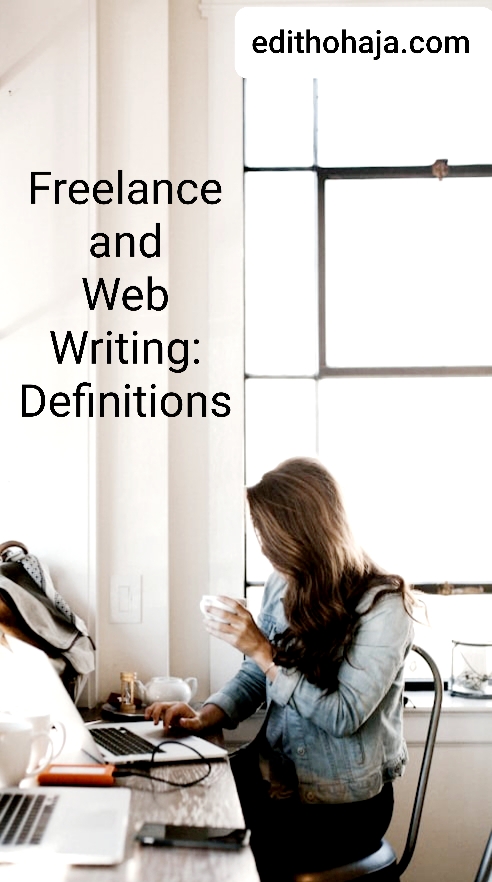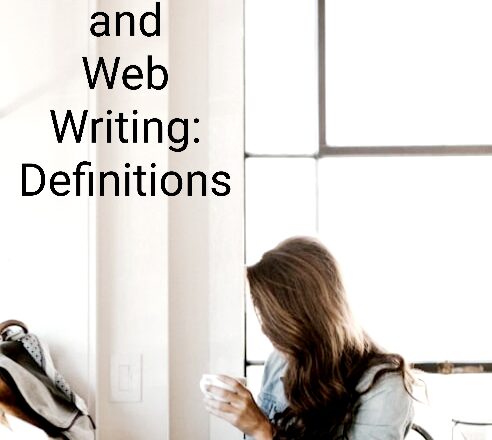Freelance and Web Writing: Definitions
In this post, we examine important definitions in Freelance and Web Writing.
The word, freelance, did not originate in the writing business in particular or communication in general.
According to Miles Burke, the word was first seen as two separate words, “free” and “lance” in Sir Walter Scott’s historical novel, Ivanhoe: A Romance. Scott used the terms to describe a soldier for hire who did not scrupulously choose whom he fought or make other ethical considerations but moved to wherever he was offered the most money. The novel was first published in 1819.
In its explanation of the etymology of the word, freelance, the Merriam-Webster Dictionary gives the particular sentence in the novel where this reference was made as:
“I offered Richard the service of my Free Lances, and he refused them—I will lead them to Hull, seize on shipping, and embark for Flanders; thanks to the bustling times, a man of action will always find employment.”
That is like saying, “My weapons are unencumbered and I am ready to use them in the service of anyone that can pay my price. If one declines, there will certainly be another.”
The dictionary adds that the word quickly began to be used in other contexts, like for politicians with no particular affiliations or party ties and anyone “who does any type of work on one’s own terms and without any permanent or long-term commitment to an employer.”
The person offering his services was earlier known as a freelance but later, freelance became the verb and adjective, freelancing and freelancer, the nouns for the job without bonds and the person doing it. Other terms used to describe freelancers include independent contractors, sole entrepreneurs and self-employed.

Original image for the graphic: Andrew Neel on Unsplash
On its part, the World Wide Web, simply called the Web, is the part of the internet that popularised its use for the public around the world. According to Jason Deign, prior to that time, its use was limited to communications within the military and scientific communities, like email.
A British computer scientist, Tim Berners-Lee, is credited with inventing the Web (WWW) in 1989. Berners-Lee, who was working for the European Council for Nuclear Research (CERN) conceived it as a way to enhance communication between scientists at research institutes and universities, far flung and near. He continued to fine tune the invention into the early 1990s.
Deign elucidates on the two developments that made the widespread use of the Web possible.
“The first was the invention of a computer code called hypertext mark-up language (HTML). This made it possible to format text, pictures, colours and patterns on a screen to create what are known as web pages (so called because they are distributed over a section of the internet called the world-wide web). The second was the introduction of programs called web browsers that could read HTML and thus allow users to view these pages.”
A related development was the availability of personal computers at affordable prices and modems that enabled people to connect to the internet through the telephone system.
The Cambridge Dictionary defines the Web as “the system of interconnected documents on the internet, often containing pictures, video, and sound, that can be searched for information about a particular subject.” It is probably this interconnectedness that informed the adoption of the word, Web, as it depicts a network of parts woven together so that the different parts can reach one another.
A more comprehensive definition of the Web from TechTarget makes the foregoing clear. It states that the Web “refers to all the public websites or pages that users can access on their local computers and other devices through the internet.” It adds that, “These pages and documents are interconnected by means of hyperlinks that users click on for information. This information can be in different formats, including text, images, audio and video.”
These definitions show that the Web gives the communicator global access to information as well as the potential to reach a global readership/audience with his work packaged in a combination of forms, known as a multimedia format.
A lot of discussions in this course will explore how the communicator who wants to work independently can do so effectively using the Web.
Discussion Question:
Describe the way communication was conducted before the invention of the Web.
Assignment:
Write a brief profile of yourself, emphasising your communication skills, and upload it to your dedicated social media page or blog.


Nice teaching 😊
Praise God!
This was indeed educative as I have never really known the meaning of freelancing and I had alot of misconception abou it but thank God for this.
This is educating 💜
This is very educative ma. Kudos to you!